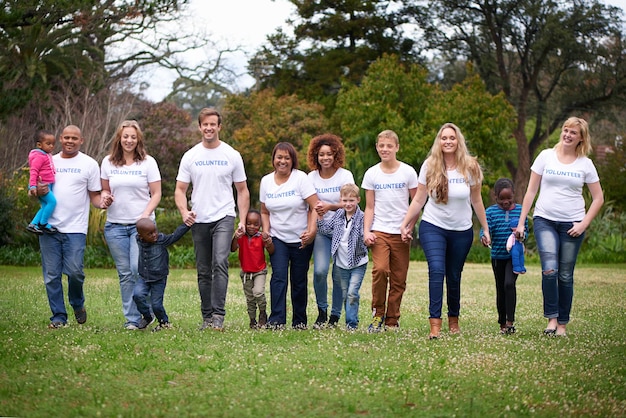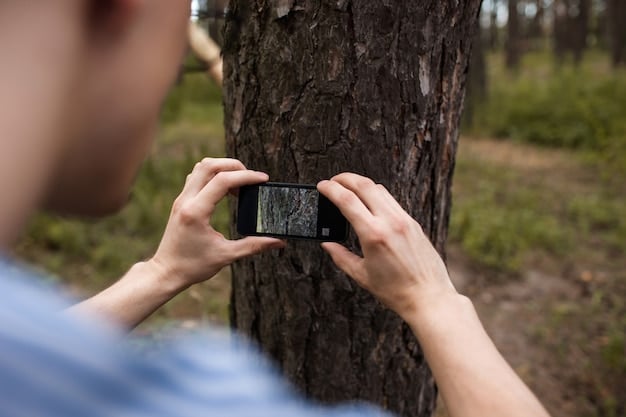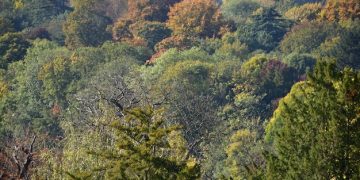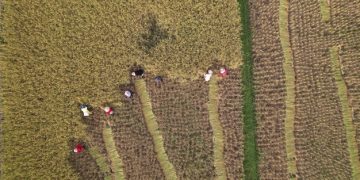Citizen Science: Wildlife Monitoring Programs for Your Community

Citizen science programs offer practical solutions for wildlife monitoring in your community by engaging volunteers in data collection, habitat restoration, and raising awareness, enhancing conservation efforts and promoting environmental stewardship.
Want to make a real difference in wildlife conservation right in your own backyard? Citizen science programs provide a hands-on, engaging way for communities to actively participate in monitoring and protecting local wildlife populations. Let’s explore the how-to’s of implementing such a program, offering practical solutions and actionable steps for a thriving initiative.
Understanding the Need for Citizen Science in Wildlife Conservation
Wildlife conservation faces numerous challenges, including habitat loss, climate change, and pollution. Traditional monitoring methods can be expensive and time-consuming. Citizen science emerges as a cost-effective and efficient way to gather extensive data, raise awareness, and engage communities in preserving local ecosystems.
Citizen science empowers individuals to contribute valuable data collection and analysis to supplement the efforts of professional scientists and organizations. This boosts the speed and scalability of wildlife monitoring, allowing communities to develop a personal connection with the local environment.
The Benefits of Citizen Science
Citizen science initiatives provide benefits beyond just data collection. They also:
- Improve scientific literacy among participants.
- Increase public awareness about wildlife conservation issues.
- Foster a sense of stewardship and responsibility towards the environment.
- Provide valuable data that can inform conservation policies and strategies.
By engaging diverse groups of people, citizen science programs help build a broad base of support for environmental protection and stewardship.

Designing Your Citizen Science Wildlife Monitoring Program
Effective citizen science programs require careful planning and a well-defined framework. Key steps include identifying the target species, establishing clear objectives, determining data collection methods, and providing adequate training and resources for volunteers. Let’s dive into how to establish a successful program.
When designing a citizen science project, be sure to align your project goals with the needs of local wildlife and ecosystems. Consider which questions you want to answer and how citizen scientists can help you gather the necessary data while focusing on community concerns.
Defining Clear Objectives and Goals
Establish a comprehensive set of goals to help drive your project. Some examples of goals are:
- Documenting the distribution and abundance of specific wildlife species.
- Monitoring habitat quality and changes over time.
- Collecting data on wildlife behavior and interactions.
- Assessing the impact of human activities on wildlife populations.
Identifying Target Species and Habitats
Choosing the right subjects and locations is essential for success. Here are a few key considerations in doing so:
- Choose a species that is easily identifiable and relatively common in the area.
- Focus on habitats that are accessible and safe for volunteers.
- Consider involving local experts and stakeholders in the selection process.
Ensure that your target species and study area align with the interests and capabilities of the local community.
Recruiting and Engaging Volunteers
The success of your program will depend on attracting and retaining volunteers. Effective recruitment strategies include partnering with local organizations, using social media, and hosting informational events. Let’s identify how to get the community involved.
Once you’ve recruited volunteers, keep them engaged through regular communication, recognition, and opportunities for ongoing learning and participation.
Effective Recruitment Strategies
Employing effective engagement and recruitment strategies is key. Consider these approaches:
- Partner with local schools, universities, and community organizations
- Use social media and online platforms to reach a wider audience
- Host informational events and workshops to raise awareness and interest
Make the recruitment process straightforward and accessible to all interested individuals.
Providing Training and Support
Preparation is key when it comes to implementing and training volunteers. You can do so by:
- Conducting training sessions on data collection methods, species identification, and safety protocols.
- Providing ongoing support and guidance to volunteers in the field.
- Creating user-friendly resources, such as field guides and online tutorials.
Data Collection Methods and Protocols
Reliable data is essential for meaningful analysis. Establish clear protocols for data collection, ensuring that volunteers understand how to accurately record and submit their observations. Take steps for accurate data by creating precise guidelines.
Utilize user-friendly platforms and technologies to streamline data management and analysis. This includes mobile apps, online databases, and GIS (Geographic Information System) software.

Selecting Appropriate Data Collection Techniques
Selecting the right data collection techniques involves:
- Using standardized protocols to ensure consistency and accuracy.
- Equipping volunteers with necessary tools and equipment, such as binoculars, GPS devices, and datasheets.
- Implementing quality control measures to identify and correct errors.
Utilizing Technology for Data Management
Technology plays a key part in managing citizen science data, and should include:
- Mobile apps and online platforms for easy data entry and submission.
- Cloud-based storage for secure and accessible data management.
- GIS (Geographic Information System) software for mapping and analyzing data patterns.
By utilizing technology, you can greatly improve the efficiency and scalability of your citizen science program.
Analyzing and Interpreting Data
Once data has been collected, it needs to be analyzed and interpreted to draw meaningful conclusions. Collaborate with scientists to analyze the data, communicate findings, and inform conservation strategies. Let’s analyze how to collaborate with scientists to gather the necessary details.
Share your findings with the community through reports, presentations, and online platforms, promoting transparency and fostering a sense of ownership in the program.
Collaborating with Scientists and Experts
You can implement scientist collaboration by:
- Involving scientists in the planning and design of the program.
- Seeking their expertise in data analysis and interpretation.
- Presenting your findings at scientific conferences and publications.
Communicating Results to the Community
After all the hardwork it’s important to showcase the key findings that include:
- Creating reports, presentations, and infographics that summarize findings.
- Sharing results through social media and community newsletters.
- Hosting public forums to discuss the implications and next steps.
Ensure that your findings are accessible and understandable to a broad audience, fostering greater community engagement and environmental stewardship.
Ensuring the Sustainability of Your Program
Sustainability is key to long-term success. Secure funding from grants, sponsorships, and individual donations to support program activities. Let’s talk about how to secure project funding.
Building strong partnerships with local organizations and agencies will help sustain your program over time, ensuring that it remains relevant and impactful.
Securing Funding and Resources
Funding your program often includes:
- Applying for grants from government agencies, foundations, and corporations.
- Seeking sponsorships from local businesses and organizations.
- Organizing fundraising events and campaigns to engage the community.
Building Partnerships and Collaborations
Building a strong partnership includes:
- Collaborating with local conservation organizations, government agencies, and educational institutions.
- Establishing advisory boards or steering committees to guide program development.
- Leveraging in-kind support from partners, such as equipment, facilities, and expertise.
By creating a network of supporters, you enhance the longevity and reach of your wildlife monitoring efforts.
| Key Point | Brief Description |
|---|---|
| 🌱 Program Design | Clear objectives, target species, and accessible habitats are essential. |
| 👩Volunteer Recruitment | Partner with local groups; use social media and host events. |
| 📊 Data Collection | Standardized protocols and tech tools ensure accuracy & efficiency. |
| 🤝 Sustainability | Grants, sponsorships, and partnerships sustain long-term efforts. |
Frequently Asked Questions
▼
Citizen science is public participation in scientific research. It involves volunteers working with scientists to collect and analyze data.
▼
It expands data collection, raises awareness, and engages communities in conservation, making monitoring more efficient and cost-effective.
▼
Define objectives, identify target species, recruit volunteers, develop data protocols, and partner with local organizations.
▼
Volunteers provide more data, increased public awareness, and a sense of environmental stewardship, leading to better public support.
▼
Provide thorough training, standardized protocols, quality control measures, and utilize technology for efficient data management.
Conclusion
By implementing these practical solutions, your community can actively contribute to wildlife monitoring, fostering a deeper connection with the environment and promoting the long-term sustainability of local ecosystems. Your efforts in citizen science not only generate valuable data but also inspire others to take action. Let’s come together to protect and preserve the natural wonders around us.





